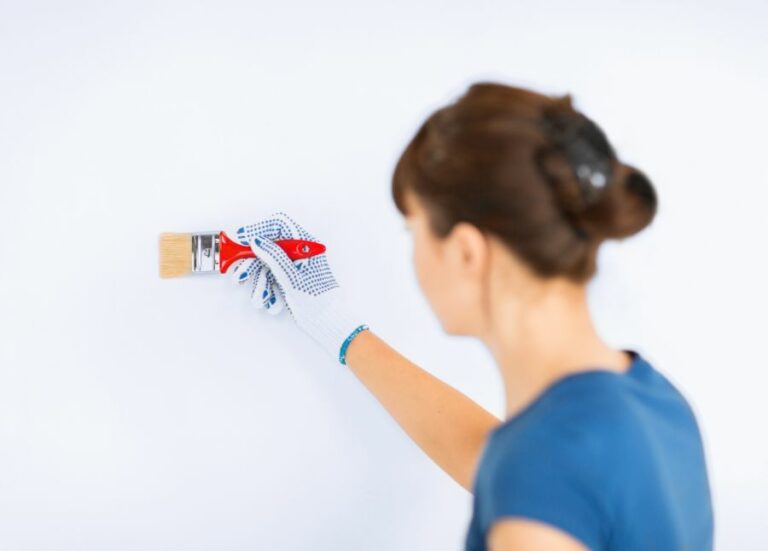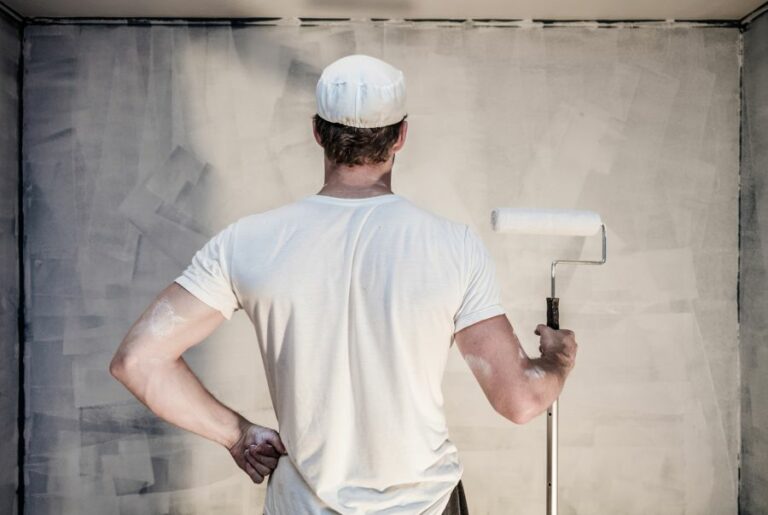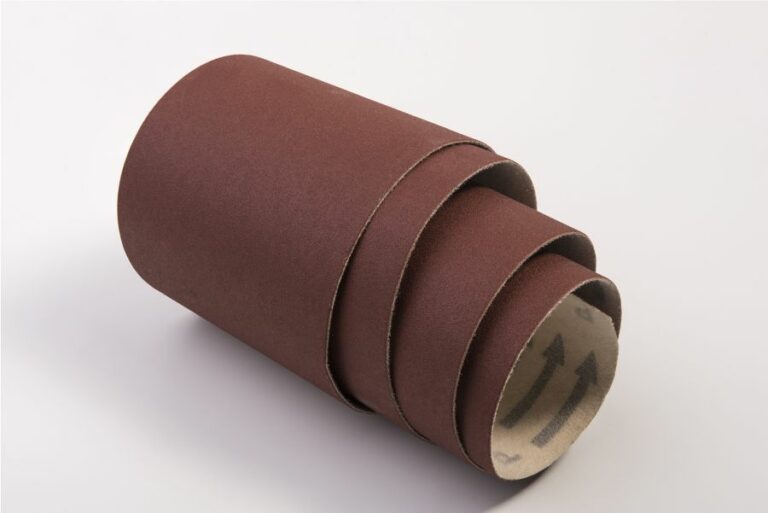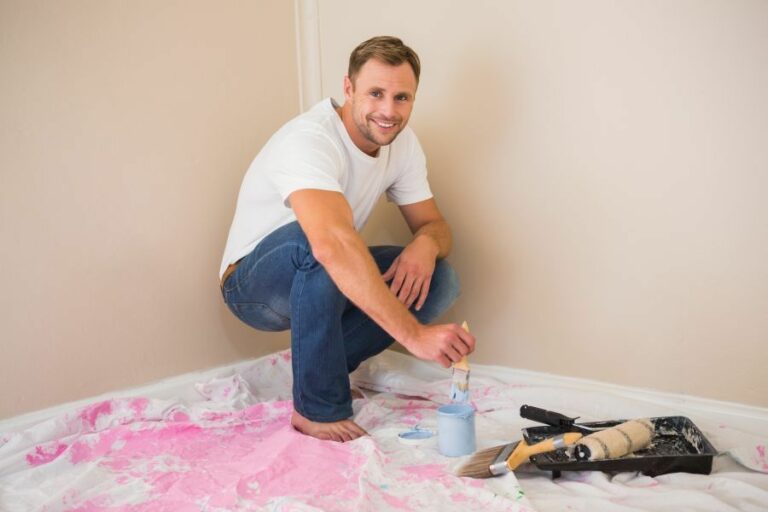Clearing Surfaces Of Rust And Peeling Paint. What Pros Say
Rust and peeling paint can be quite an eyesore on otherwise attractive surfaces. If you’ve been struggling to figure out the best way to tackle this issue without damaging the integrity of the underlying material, look no further. We’ve got the knowledge and guidance you need to achieve impressive results when clearing surfaces of rust and peeling paint.
Clearing surfaces of rust and peeling paint:>
To eliminate rust and peeling paint from surfaces, use mechanical methods such as sandpaper or wire brushes, chemical rust removers, electrolysis for rust removal, manual scraping, power tools, or chemical strippers for peeling paint. Always follow safety precautions, prepare the surface for refinishing, and provide proper ventilation.

Are you tired of unsightly rust and peeling paint on your treasured items? In this article, we reveal easy, efficient, and safe methods to restore their original beauty. Read on for more tips and tricks to bring life back to those weathered pieces!
Contents
- 1 Eliminating Rust and Flaking Paint from Surfaces
- 2 Safely Removing Surface Rust Without Affecting Paint
- 3 Techniques for Stripping Paint and Rust from Metal
- 4 Preparing a Rusty Surface for Painting: Best Practices
- 5 Top Methods for Effective Rust Removal from Surfaces
Eliminating Rust and Flaking Paint from Surfaces
• Identifying Rust and Peeling Paint
Rust and peeling paint are two common problems that can significantly affect the aesthetics and integrity of various surfaces. Rust is caused by the oxidation of metals, such as iron and steel. As the metal oxidizes, it forms a reddish-brown substance that can be difficult to remove.
Peeling paint, on the other hand, occurs when the bond between the paint and the surface it’s applied to is compromised. This can be due to a variety of factors, such as improper surface preparation, exposure to moisture and sunlight, or the use of low-quality paint.
• Safety Precautions
Before you begin the process of removing rust and peeling paint, it’s crucial to take certain safety precautions. First and foremost, wear protective gear, such as gloves, safety glasses, and a dust mask.
This will ensure that you’re protected from any harmful particles or chemicals that may be released during the removal process. Additionally, ensure that you’re working in a well-ventilated area, as some of the chemicals used in this process can produce harmful fumes.
Finally, if you’re working on a large or elevated surface, consider using a scaffold or ladder to ensure your safety while working at height.
• Rust Removal Techniques
– Mechanical Methods
One of the most straightforward methods of removing rust is through mechanical action, using tools like sandpaper, steel wool, or wire brushes. These abrasives physically scrape away the rust, leaving the metal surface clean and smooth.
When using these tools, it’s essential to work gently, as applying excessive pressure can cause further damage to the metal surface.
– Chemical Methods
For tougher rust stains that can’t be removed through mechanical methods alone, you can turn to chemical products designed specifically for rust removal.
These products, which typically contain phosphoric acid, oxalic acid, or acetic acid, work by breaking down the rust and dissolving it, allowing you to easily remove it from the surface.
To use these products, follow the manufacturer’s instructions carefully, and be sure to rinse the surface thoroughly once the rust has been removed. You can find chemical rust removers at most hardware or home improvement stores.
– Electrolysis
For those who have access to the proper equipment and knowledge, electrolysis is another effective method for removing rust. This process involves passing an electric current through a solution, which separates the rust from the metal surface.
While this method can be highly effective, it’s generally best reserved for those with experience in working with electrical currents and chemicals.
• Removing Peeling Paint
– Manual Scraping
One of the simplest methods for removing peeling paint is by using a paint scraper or putty knife. To begin, gently slide the scraper under the edge of the peeling paint, lifting it away from the surface.
Continue working across the surface, taking care to avoid gouging or damaging the underlying material.
– Power Tools
For larger or more stubborn areas of peeling paint, power tools like a paint shaver, heat gun, or rotary tool with a paint-stripping attachment may be used.
These tools can be more efficient than manual scraping; however, they also pose a higher risk of damaging the surface, so use them cautiously and follow the manufacturer’s guidelines.
– Chemical Strippers
Chemical paint strippers can be a helpful aid in removing peeling paint, particularly for intricate or hard-to-reach surfaces. These products contain active chemicals that break down and dissolve the paint’s bond, allowing it to be easily removed.
When using a paint stripper, follow the manufacturer’s instructions carefully, and be sure to protect any surfaces or items nearby from potential damage.
• Preparing the Surface for Refinishing
Once the rust and peeling paint have been removed, it’s essential to prepare the surface for refinishing thoroughly. This includes making any necessary repairs, such as filling holes or smoothing uneven areas, as well as properly cleaning and priming the surface.
By taking the time to prepare the surface carefully, you’ll ensure a long-lasting and visually appealing finish.
• Final Thoughts
Clearing surfaces of rust and peeling paint can be challenging work, but the results are well worth the effort. Remember to follow proper safety precautions, use the appropriate tools and techniques, and give adequate attention to surface preparation.
With patience and persistence, you can restore the beauty and integrity of your surfaces, ensuring they stand up to the test of time.
Safely Removing Surface Rust Without Affecting Paint
Surface rust is a common issue that affects vehicles, bikes, and other metal objects exposed to moisture, humidity, or harsh weather conditions. Removing surface rust without damaging the paint might seem like a challenging task, but it can be done with the right tools, techniques, and patience.
• Identifying Surface Rust
Before you begin, it’s crucial to determine the extent of the rust. Surface rust is the least severe of the three rust stages – surface, scale, and penetrating. It just affects the top layer of paint and metal and can be removed without damaging the paint underneath.
If you notice flaking paint, bubbling, or extensive rust, consider consulting a professional or preparing for more involved rust treatment.
• Tools and Materials Required
To remove surface rust without damaging the paint, gather the following tools and materials:
- Car wash soap and water
- Clean, lint-free microfiber cloths
- A soft bristle brush or toothbrush
- Paint-safe clay bar
- Commercial rust remover solution (non-abrasive)
- Rust converter
- Paint-safe rubbing compound or scratch remover
- Wax or sealant
• Removing Surface Rust: Step-by-Step Guide
– Step 1: Clean the Surface
First, thoroughly clean the affected area with car wash soap and water to remove dirt and debris, ensuring you have a clean surface to work on. Rinse with water and let it dry completely, or use a microfiber cloth to speed up the process.
– Step 2: Use a Clay Bar
For small amounts of surface rust, a paint-safe clay bar can be highly effective. Lubricate the area by spraying water or a clay bar lubricant before rubbing the clay bar against the rust spots.
Keep rubbing the clay bar on the surface in a back-and-forth motion until the rust is removed. Be gentle to avoid scratching the paint. Once completed, wipe the area with a clean microfiber cloth.
– Step 3: Apply a Rust Remover Solution
For heavier rust, you might need a commercial rust remover solution, which will chemically dissolve rust from the metal surface. While choosing a rust remover, ensure that it is non-abrasive and safe for painted surfaces.
Apply the solution to the rusted area according to the product’s instructions, usually involving a clean cloth or applicator pad.
After applying the solution, let it sit for the recommended time, which typically ranges from 10 to 20 minutes. With a soft bristle brush or toothbrush, gently scrub the rusted area to lift the rust particles. Rinse the area with water and let it dry.
Note: Avoid using abrasive products like steel wool or sandpaper, as they might scratch and damage the paint around the rusted area.
– Step 4: Apply a Rust Converter
Using a rust converter solution can help neutralize remaining rust and ensure it doesn’t return. These products contain a chemical called tannic acid, which reacts with rust to create a more stable surface.
Apply the rust converter according to the manufacturer’s instructions, typically with a brush or cloth, and let it sit for the recommended time. Once complete, rinse the area and clean it with a microfiber cloth.
– Step 5: Polish with Rubbing Compound
To restore the original shine of the paint, use a paint-safe rubbing compound or scratch remover. Apply a small amount of compound to a clean cloth or applicator pad and gently rub the area in a circular motion. Keep rubbing until the paint surface is smooth and glossy.
– Step 6: Apply Wax or Sealant
Finally, protect the cleaned area with a coat of wax or sealant, creating a barrier against future rust formation. Follow the wax or sealant instructions for proper application and removal.
• Additional Tips and Warnings
- Always work on a cool, shaded surface to avoid premature drying of the products.
- Test the rust removal products on a small, inconspicuous area to ensure they don’t damage the paint.
- Address rust issues as soon as you see them to prevent worsening and damaging the paint or metal underneath.
By following these steps, you can effectively remove surface rust from your vehicle or other metal objects without damaging paint. Regular maintenance and care will help prevent rust from forming and prolong the life and appearance of your paint job.
Step | Description |
|---|---|
1 | Gather supplies: white vinegar, baking soda, water, sponge, and clean cloth. |
2 | Make a paste by mixing baking soda and water. |
3 | Apply the paste to the rusted areas using a sponge or cloth. |
4 | Allow the paste to sit for 10-15 minutes. |
5 | Scrub the rust spots with a sponge or cloth to remove the rust. |
6 | Rinse the area with water to remove any residue. |
7 | Wipe the area with a clean cloth. |
8 | If rust persists, repeat the process or consider using a rust remover product specifically designed for painted surfaces. |
Techniques for Stripping Paint and Rust from Metal
Removing old paint and rust from metal surfaces is essential for prolonging the life of metal objects, ensuring the best possible finish, and reducing the risk of further corrosion.
The process can require time, patience, and the right tools, but with the proper techniques and expert advice, you can achieve outstanding results.
• Mechanical Methods for Removing Paint and Rust
Mechanical techniques involve the use of tools and abrasive materials to physically remove paint and rust from the metal’s surface. Commonly used mechanical methods include sanding, grinding, and wire brushing.
– Sanding
Sanding is an efficient method for removing old paint from metal surfaces. You can use sandpaper or handheld power sanders with a range of grits, depending on your desired finish.
- Grit Recommendations: For heavily rusted surfaces, start with a coarse grit (80-100) and gradually work your way up to a finer grit (180-220) for a smoother finish. For surfaces with little to no rust, you can begin with a medium grit (120-150) and finish with a fine grit (180-220).
- Safety Tip: Always wear gloves and protective eyewear when sanding, as the process can create dust and small particles that can irritate the skin and eyes.
– Grinding
For more aggressive paint and rust removal, an angle grinder fitted with a flap disc, wire wheel, or grinding wheel is an excellent tool to use.
- Flap Discs: These versatile discs are made from overlapping layers of abrasive material and are suitable for the aggressive removal of rust and paint, as well as smoothing and polishing surfaces.
- Wire Wheels: These attachments are ideal for removing surface rust, paint, and contaminants without damaging the underlying metal. Be sure to choose a wheel with the appropriate bristle stiffness for the job.
- Grinding Wheels: These abrasive attachments are perfect for heavy-duty paint and rust removal but can remove more material than desired if not used carefully.
- Safety Tip: Ensure that you wear appropriate protective gear, such as gloves, eyewear, and hearing protection, when using angle grinders.
– Wire Brushing
Using a handheld or powered wire brush can be an effective method for removing paint and rust from metal surfaces, especially in tight or hard-to-reach areas.
- Manual Wire Brushes: These brushes are available in various shapes and sizes, tailored to specific surfaces and applications.
- Powered Wire Brushes: Attachments for power tools, such as drills and rotary tools, offer a more efficient alternative for larger surfaces or more stubborn rust and paint.
- Safety Tip: Be cautious of flying debris and sharp bristles when using wire brushes.
• Chemical Methods for Removing Paint and Rust
Chemical methods involve the application of specialized chemicals or solutions to loosen or dissolve paint and rust from metal surfaces. These can often be less labor-intensive than mechanical methods but require careful handling.
– Paint Strippers
Paint strippers are designed to break down the bond between the paint and metal, allowing for easy removal. These products are available in liquid, gel, or aerosol form and typically contain solvents, such as methylene chloride, or more eco-friendly alternatives, like soy-based products.
- Application: Follow the manufacturer’s instructions carefully, as improper use can result in damage to the metal or harm to the user. Generally, apply the stripper to the surface and allow it to work for the specified time. Use a scraper, brush, or abrasive pad to remove the softened paint.
- Safety Tip: Ensure that you wear gloves, goggles, and protective clothing, and work in a well-ventilated area when using paint strippers.
– Rust Converters and Removers
Rust converters and rust removers are chemical solutions specifically designed to address rust on metal surfaces.
- Rust Converters: These products chemically convert rust into a stable, protective coating that can be painted over. Some rust converters, such as the OSPHO Metal Treatment, even act as a primer for subsequent painting. Apply according to the manufacturer’s directions and allow the appropriate curing time before painting.
- Rust Removers: These solutions are formulated to dissolve rust chemically, allowing for easy removal with a brush, cloth, or rinse. Always follow the product instructions and use caution when handling.
• Environmental Methods for Removing Paint and Rust
Environmental techniques utilize heat, cold, or water pressure to remove paint and rust from metal surfaces.
– Heat
Using heat, such as a propane torch or heat gun, can be an effective method to remove old paint from metal surfaces. The heat softens and bubbles the paint, allowing for easy scraping or peeling.
- Safety Tip: Practice caution with open flames and hot surfaces by wearing heat-resistant gloves and goggles and keeping a fire extinguisher nearby.
– Cryogenic Blasting
Cryogenic blasting, also known as dry ice blasting, is an environmentally friendly method that uses solid carbon dioxide particles (dry ice) as a blasting medium. The process is non-abrasive and can remove paint and rust without damaging the metal substrate.
- Professional Services: Cryogenic blasting is typically performed by professionals who have access to the specialized equipment and materials required for the process.
– Pressure Washing
High-pressure water can remove loose paint and surface rust, making it an effective pre-treatment before sanding or applying chemicals. Use a pressure washer with a high PSI rating and a narrow spray nozzle.
- Safety Tip: Wear protective gear, such as gloves and goggles, when operating a pressure washer.
• Final Thoughts
In conclusion, there are numerous methods for removing old paint and rust from metal surfaces, each with its advantages and drawbacks. The choice of technique depends on factors such as the type of metal, the extent of paint and rust, and the desired finish.
Regardless of the method chosen, always follow safety precautions and best practices to ensure successful and risk-free results.
Step | Description |
|---|---|
1. Gather Tools and Materials | Gather necessary safety gear, tools, and materials such as gloves, goggles, wire brush, sandpaper, paint scraper, drill with the wire brush attachment, rust converter, and paint remover. |
2. Scrape Off Loose Paint and Rust | Use a paint scraper or wire brush to scrape off loose paint and rust from the metal surface. |
3. Sand the Metal | After removing loose materials, use sandpaper to sand the metal surface down to the original metal. Make sure to sand evenly and ensure all remaining rust and paint are removed. |
4. Use a Wire Brush Attachment on a Drill | For tougher rust spots, attach a wire brush to a drill and apply pressure to the rusted areas. This will help remove the remaining rust from more difficult areas. |
5. Apply Rust Converter (Optional) | If any remaining rust is present, apply a rust converter to the surface according to the manufacturer’s directions. This will chemically convert the rust into a stable, paintable surface. |
6. Apply Paint Remover (Optional) | If paint remains on the metal surface, apply a paint remover or stripper according to the manufacturer’s directions. This will help lift the remaining paint from the metal surface. |
7. Clean and Dry the Metal Surface | Thoroughly clean the metal surface with water and detergent, then dry it completely to prepare it for painting or other treatments. |
Preparing a Rusty Surface for Painting: Best Practices
Surface rust is a common issue for metal surfaces, particularly in situations with humidity or exposure to moisture. This can result in a weakened and unsightly appearance. Before painting, it’s essential to remove surface rust for an effective and long-lasting paint job.
• Assessing the Severity of Rust
Before starting any rust removal process, it’s essential to assess the severity of the rust on the metal surface. This helps determine the most effective and efficient method to use. Rust severity typically falls into three categories:
- Light Rust: Thin, reddish-brown spots on the metal’s surface
- Medium Rust: Rust is more pronounced, occupying larger areas
- Heavy Rust: The metal surface has significant rust spots, including scaling and pitting
For light rust, simple cleaning methods or mild abrasives may suffice. Meanwhile, medium and heavy rust may require more aggressive techniques using power tools or chemicals.
• Tools and Materials
Gathering the necessary materials before starting the rust removal process is vital. You may need the following:
- Steel wool or sandpaper (80 to 150 grit)
- Rust converter or clr
- Degreaser or soap
- Wire brushes or abrasive pads
- Clean rags or shop towels
- Protective gear (safety glasses, gloves, respirator)
- Electric drill with a wire brush attachment
- Angle Grinder with a flap disc (optional)
It’s crucial to have a range of abrasive materials and tools at hand, as different rust situations require varied approaches.
• Removing Light Rust
– Mechanical Removal
For light surface rust, a thorough scrubbing with a wire brush or abrasive pad is often sufficient. By applying steady pressure and using circular motions, you can effectively remove rust spots.
Switch to finer grit sandpaper or steel wool for any stubborn areas that require more effort.
– Chemical Removal
A rust converter, like CLR or Rust-Oleum, can effectively dissolve light rust on metal surfaces. Follow the manufacturer’s instructions to apply the rust converter properly. After treatment, the metal surface needs a thorough cleaning with a degreaser or mild soap before painting.
• Removing Medium Rust
– Power Tools
Utilize a power tool, such as an electric drill with a wire brush attachment, to assist with medium rust removal.
Remember to use appropriate safety gear and exert steady pressure while using a low to medium-speed setting. The wire brush will quickly remove the rust without damaging the metal surface.
– Sandblasting
If the rusted surface is large, consider using a sandblasting technique. Many companies rent out sandblasting equipment, and it’s an efficient method for removing medium rust from larger surfaces.
Be sure to follow all safety precautions and consult with the rental company if you’re unclear about how to use the equipment.
• Removing Heavy Rust
– Angle Grinder
For significant rust spots that include scaling and pitting, the use of an angle grinder with a flap disc is recommended. This tool provides a powerful abrasive force for removing heavy rust quickly. Be sure to use caution, as it can be more challenging to control than other power tools.
– Chemical Rust Removers
If mechanical methods aren’t successful in completely removing heavy rust, commercial-grade rust removers are available. Follow the manufacturer’s instructions and adhere to safety guidelines when using potent rust-removing chemicals.
• Preparing the Surface for Painting
After the rust is removed, the metal surface requires preparation before painting. Be sure to clean the surface using a degreaser or mild soap, removing any remaining rust particles, dust, or grease. Rinse the surface and allow it to dry thoroughly.
Before applying paint, use a quality metal primer to create a bond between the metal and paint. This step ensures better adhesion and prevents future rust formation under the paint.
• Conclusion
Thoroughly removing surface rust before painting is crucial for a durable and visually pleasing paint job. With a range of techniques and tools available, you can ensure rust is removed effectively from any metal surface.
By following the guidelines laid out in this article, both novices and experienced individuals can achieve professional results.
| How do you remove surface rust before painting? | |
|---|---|
| 1. Clean the surface | Remove dirt, grease, and oils from the surface using soap and water, or a heavy-duty cleaner. Rinse well and let it dry. |
| 2. Remove loose rust | Use a wire brush, sandpaper, or a rust removal product to remove loose rust and peeling paint from the surface. |
| 3. Sand the surface | Sand the surface, especially the rusty areas, with medium-grit or fine-grit sandpaper to smooth out the surface and remove any remaining rust. |
| 4. Clean and rinse again | After sanding, clean the surface again with soap and water or a heavy-duty cleaner. Rinse well and let it dry completely. |
| 5. Apply a rust converter | If there’s still some rust left, apply a rust converter to the surface. This product will chemically convert the rust into an inert, stable compound that can be painted over. |
| 6. Prime the surface | Apply a rust-inhibiting primer to the surface, following the product’s instructions. Let it dry completely before painting. |
Top Methods for Effective Rust Removal from Surfaces
Rust, also known as iron oxide, occurs when the metal comes into contact with moisture and oxygen for an extended period. Rust removal is essential to maintain the durability and appearance of the metal.
• Mechanical Rust Removal Techniques
– Sanding or Grinding
One of the most common methods to remove rust is by sanding or grinding the affected surface. This technique involves the use of abrasive materials or power tools, such as sandpaper, steel wool, wire brushes, or angle grinders, to physically remove the rust from the metal surface.
While sanding and grinding are effective, they can be labor-intensive and may cause damage to the underlying metal if not done carefully.
Recommendation: For small areas with light rust, fine-grit sandpaper or steel wool is recommended. For larger areas or thicker rust deposits, a wire brush or angle grinder will be more appropriate.
– Blasting
Blasting is another mechanical technique for removing rust, involving the use of a high-pressure air compressor to blast an abrasive material on the rusted surface.
Common blasting materials include sand, glass beads, and walnut shells. This technique is effective in removing rust but can be expensive as it requires specialized equipment.
Recommendation: Blasting should be reserved for large-scale or more extensive rust removal projects and should be performed by professionals.
• Chemical Rust Removal Techniques
– White Vinegar
White vinegar, a mild acid, is an affordable and natural solution for removing rust. By soaking the rusted item in white vinegar, the acid will dissolve the rust, which can then be wiped or scrubbed away.
This method requires more time than other chemical methods but is non-toxic and safe for household use.
Recommendation: Soak the rusted item in white vinegar for several hours up to overnight, depending on the extent of the rust. Scrub the item with a brush or steel wool to remove any remaining rust, and rinse with water.
– Commercial Rust Removers
There are several commercial rust removers available, containing ingredients such as oxalic or phosphoric acid, which dissolve the rust when applied to the affected surface.
These products are effective and quick, but they may contain toxic chemicals and should be used with caution.
Recommendation: Follow the instructions on the product label for proper application and safety precautions. Some effective commercial rust removers include Naval Jelly, Rust-Oleum Rust Dissolver, and Krud Kutter Rust Converter.
– Electrolysis
Electrolysis is a method that uses an electric current to convert rust back into its original metallic state.
This technique requires a power source, such as a battery charger or car battery, a container filled with an electrolyte solution (such as baking soda and water), and a sacrificial anode (usually steel or iron).
When the current flows through the electrolyte solution, the rusted item (connected to the positive terminal) releases iron oxide ions, which then attach to the sacrificial anode, effectively removing the rust.
Recommendation: This method is best for heavily rusted items or those with intricate details, where other methods would be ineffective or cause damage. Be sure to work in a well-ventilated area, as electrolysis can produce hydrogen gas.
• Rust Prevention and Maintenance
After successfully removing the rust from the metal surface, preventive measures should be taken to protect it from future rust formation. Some of these measures include:
- Painting or applying a rust-resistant coating to the metal surface
- Storing metal items in a dry and well-ventilated environment
- Inspecting metal surfaces regularly for signs of rust
- Addressing rust spots as soon as they are noticed
• Conclusion
In summary, various mechanical and chemical methods are available to remove rust from surfaces, each with its benefits and drawbacks.
It is essential to select the most appropriate method based on the type and extent of rust, as well as consider preventive measures to ensure that the metal remains rust-free in the future.
Method | Description | Pros | Cons |
|---|---|---|---|
White Vinegar | Soak the rusted item in white vinegar for a few hours, then scrub with a brush. | Natural, inexpensive, and easy to find. | It can take several hours and may not be effective on heavy rust. |
Baking Soda | Make a paste with baking soda and water, apply to the rusted area, let it sit for a few hours, then scrub with a brush. | Natural, inexpensive, and easy to find. | It can take several hours and may not be effective on heavy rust. |
Commercial Rust Remover | Follow the instructions on the product label for proper use and application. | Fast and effective, specifically designed for rust removal. | It may contain chemicals and can be expensive. |
Physical Abrasion | Use sandpaper, steel wool, or a wire brush to scrub off the rust. | Quick and effective, especially for larger or irregularly shaped items. | It can damage the surface of the item and requires manual effort. |
Electrolysis | Submerge the rusted item in an electrolyte solution and use a low-voltage current to remove rust. | Effective, it can remove heavy rust without damaging the item. | Requires special equipment and may not be suitable for all items. |







